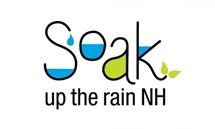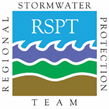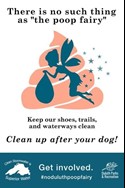Water Quality Resources

According to Minnesota Sea Grant, “rain on the University of Minnesota Duluth (UMD) campus can become part of Lake Superior within 5 minutes, racing through culverts and down Oregon Creek.” This evidence of our connectivity with Lake Superior, even from the top of the hillside, is a reminder not to litter, and an opportunity to get involved! Check out the resources below for everything water-related about living in Duluth!

Whether you live in the city or along a lake or river, managing stormwater runoff is important.
Rooftops, roads, driveways and sidewalks are hard surfaces that prevent rainwater and melting snow from reaching the soil and soaking into the ground. These hard surfaces also collect nutrient-rich yard and pet waste, oil and radiator fluid from autos, and other debris and pollutants. Rain gardens can capture this runoff and filter it before it gets into streams, lakes, and rivers!
Blue Thumb is proud to partner with Minnesota’s Board of Water and Soil Resources (BWSR) to promote and implement the new Lawns to Legumes program to help residents convert some of their lawn to flowering plants that provide wildlife and pollinators with habitat and forage.

See images of the different types of storm water mitigation projects and learn how to do it yourself (DIY)!
Do-it-yourselfers are encouraged to use the fact sheets listed below to complete their SOAK projects. Each fact sheet includes a list of recommended materials and equipment as well as step-by-step instructions for installation. Before getting started, check out the SOAK Project Steps page for tips on selecting a good location and appropriate stormwater practice for your property.

Do you shovel your own sidewalks or hire a snow removal service? Does your business shovel snow at the entrance? Do you provide snow removal services for hire? If the answer is “yes” to any of these questions click on this link and learn about ways to keep sidewalks, entryways, parking lots and driveways safe in winter while saving money and reducing water pollution.MN
https://www.pca.state.mn.us/featured/snow-removal-do-it-better-cheaper-and-pollution-free

The Western Lake Superior Sanitary District, along with a group of stakeholders, developed a toolkit to help educate families, farmers, contractors, and caregivers about safely handling and disposing of medications, pesticides, and mercury.

Every year the South St. Louis SWCD offers a wide selection of native trees and shrubs for purchase at a reasonable price. These trees are picked up by the purchaser in May.
https://www.southstlouisswcd.org/annual-tree-and-shrub-sale/

Field Guide for Maintaining Rural Roadside Ditches Protecting Lakes and Streams through Proper Ditch Maintenance
https://www.lakesuperiorstreams.org/stormwater/toolkit/contractor/resources/ditchguide_seagrant.pdf

High animal populations yield lots of waste for the ecosystem to decompose. In a natural forest, this waste would slowly be broken down by microorganisms and would then be filtered through the soil by rain and snowmelt.
In an urban setting, the natural system has been altered by increased runoff due to impervious surfaces (surfaces that do not allow water to infiltrate the soil including rooftops and asphalt or concrete roads, parking lots and sidewalks). Pet waste that isn't properly disposed of will often be flushed into streams and lakes before being completely broken down.
https://wlssd.com/blog/scoop-poop-act-love-waters/
https://www.lakesuperiorstreams.org/understanding/impact_pet.html




